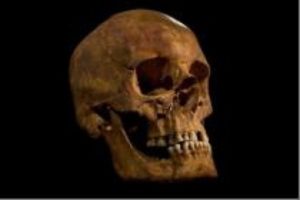While browsing some dental articles recently, I came across an article which reported that testing done on bone chemistry revealed more information about the royal lifestyle of King Richard III!
Our Teeth: A Unique Footprint of Our Lives
The article states that a recent study conducted by the British Geological Survey, in association with researchers at the University of Leicester, has delved into the bone and tooth chemistry of King Richard III to uncover fascinating new details about his diet and lifestyle!

What Your Eating Habits Say About You
The study indicates a change in the king’s diet and location sometime during his early childhood. Later, he consumed a diet rich with expensive, high-status food and drink, according to Elsevier’s Journal of Archaeological Science.
Dr Angela Lamb, Isotope Geochemist and lead author of the paper, said, “The chemistry of Richard III’s teeth and bones reveal changes in his geographical movements, diet, and social status throughout his life.”
Richard Buckley from the University of Leicester Archaeological Services, who lead the archaeologists in the Richard III dig, says “This cutting-edge research has provided a unique opportunity to shed new light on the diet and environment of a major historical figure—Richard III. It is very rare indeed in archaeology to be able to identify a named individual with precise dates and a documented life. This has enabled the stable-isotope analysis to show how his environment changed at different times in his life and, perhaps most significantly, identified marked changes in his diet when he became king in 1483.”
The study analyzed isotope measurements—related to geographical location, pollution, and diet—in three locations of King Richard’s skeleton.
His teeth confirmed that Richard had moved from Fotheringay castle in eastern England by the time he was seven. By examining the femur, which provided information for about fifteen years before his death, researchers found that Richard had moved back to eastern England as a young adult and had a diet matching the highest aristocracy.
They also analyzed one of King Richard’s ribs. Because a rib renews itself relatively fast, the findings were only able to represent between two and five years of his life before he died. The data collected from the rib bone indicated the greatest change in his diet. Although there was an alteration in the chemistry between Richard’s femur and his rib, which could indicate a relocation at some point during his adolescence, historical records have shown that the king did not move from eastern England in the two years prior to his death.
So it’s suggested that instead, the data collected represents a change in his diet related to his time as king. The study found an increase of his consumption of freshwater fish as well as birds such as swans, cranes, herons, and egrets, which were popular foods at royal gatherings.
Additionally, the bone chemistry suggests that Richard consumed more wine during his short reign as king!
What We Know Now
It’s thrilling to see how modern technology has uncovered such interesting artifacts from our past by our teeth! The possibilities are nearly endless!
For a beautiful smile!







